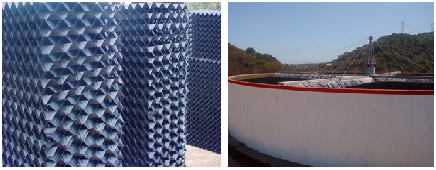 |
|
In a wastewater treatment system with trickling filters, the removal of organic load and nitrogen can occur simultaneously. One of the important factors of the nitrification in trickling filters is that, contrary to what happens with activated sludge where the hydraulic retention time is 4 to 8 hours, in trickling filters it is 5 to 15 minutes, so there is more possibilities to achieve nitrification in activated sludge that in trickling filters. The objective of this work was to evaluate the behavior of the nitrification process of the trickling filters of the Wastewater Treatment Plant "El Punto" located in Tepic, Nayarit, Mexico. The laboratory results indicated low nitrogen removal not complying with the maximum permissible limits for discharge to a river; also analyzed some parameters that influence the nitrification kinetics such as temperature, pH, dissolved oxygen and alkalinity. Finally, process scenarios were simulated with the GPS-X software to observe the degree of nitrification, reaching the conclusion, that the trickling filters required a greater hydraulic load to remove the total nitrogen, thus complying with the environmental regulations.
Keywords: trickling filter, nitrification, denitrification, hydraulic load, GPS-X.
|
|
 |

